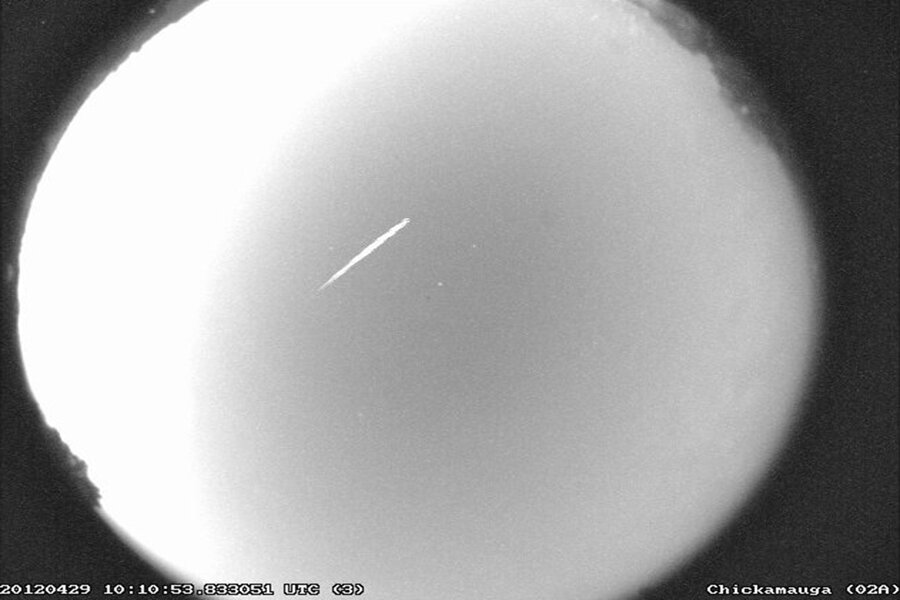Meteor shower: How to view the Eta Aquarids
Loading...
Get ready for a spectacular display of fireworks in the sky.
The Eta Aquarids meteor shower is expected to peak early Tuesday in the morning hours of May 6. The best viewing time will be in the hour or two before dawn.
The origin of the meteor shower can be traced to comet 1P/Halley – better known as Halley's Comet – which won't make another appearance in the sky until 2061.
But the debris from Halley's Comet makes itself known twice each year, in early May and mid-October. During its 76-year loop through our solar system, as the comet approaches the sun it heats up and "leaves bits of itself behind – in the form of small conglomerates of dust and ice called meteoroids," notes NASA. As the Earth passes through the comet's trail of meteoroids, some of them fall to Earth and burn up in the atmosphere, becoming shooting stars.
The Eta Aquarids, named because they appear to radiate from near one of the constellation Aquarius's brightest stars, Eta Aquarii, are known for their high velocity, about 44 miles per second. During the meteor shower's peak, some 30 shooting stars can be seen every hour. Meteors traveling with such speeds leave bright "trains" which can last for a few seconds to minutes.
Those in the Southern Hemisphere will get the best view, but the meteor shower will also be visible even from the Northern Hemisphere, with NASA predicting a peak rate of about 10 meteors per hour this year.
"This is due to the location of the radiant at different latitudes," says NASA. In May, Aquarius appears "higher up in the sky in the Southern Hemisphere than it is in the Northern Hemisphere," NASA adds. Therefore, the meteors in the Northern Hemisphere will only appear as "earthgrazers," where the meteors will appear to "skim the surface of the Earth at the horizon."
The meteors will be visible to the naked eye, as long as you can "find an area well away from city or street lights," says NASA. "Lie flat on your back with your feet facing east and look up, taking in as much of the sky as possible. After about 30 minutes in the dark, your eyes will adapt and you will begin to see meteors. Be patient – the show will last until dawn, so you have plenty of time to catch a glimpse."
The Earth will pass through the debris trail of Halley's Comet again in mid-October, prompting a meteor shower known as the Orionids.






